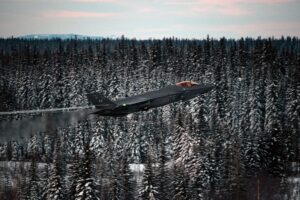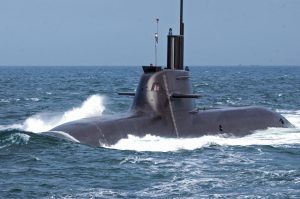Russia’s military posture in the Arctic region is becoming more offensive-based while the U.S. government sees it largely as rebuilding former Soviet capabilities, participants in a think tank panel said on Thursday.
“The Russian posture has also become more offensive. We have in recent years experienced examples of aggressive Russian behavior. Through simulated attacks, aggressive operations during the NATO exercise…Trident Juncture, and GPS jamming that has affected the civilian air traffic in the northern part of Norway,” Capt. Egil Vasstrand, Naval and Assistant Defense Attaché at the Royal Norwegian Embassy, said Thursday during a Wilson Center event.

Vasstrand added that while the posture has become more offensive, the region is becoming an increasingly important resource base for the Russian economy.
“Together with a huge modernization and buildup of new infrastructure and advanced military capabilities in the region, the high North is not going to be of less importance for the Russians in the future. It is likely that Russia is willing to use military force if they assess their strategic interests being threatened,” he continued.
However, a National Security Council official said while the U.S. government is concerned about a Russian military buildup in the region, they see it more as rebuilding the former capabilities of the Soviet Union.
“We tend to see this as a restitution of Soviet-era capabilities more than a true buildup – because Russia’s presence and infrastructure had atrophied so seriously after the collapse of the Soviet Union, that they really needed to build up in this area or restore what they used to have,” Chris Kofron, director for Russia at the National Security Council, said during the event.
He said as climate change reduces sea ice coverage in the Arctic region, that opens it for more economic and transportation uses. Russia may think this is becoming a kind of ‘goose that laid the golden egg’ for it and it needs the military muscle to support its ambitions there as it becomes a dual use dilemma for the U.S. and its allies.
Kofron also argued it still remains to be seen how much Russia can prioritize the Arctic as they “have lost a tremendous amount of military capacity in Ukraine that it will need to restore, which could take decades. And the war is not over yet. And Russia does tend to prioritize strategic and nuclear capabilities at the expense of others.”
Regarding nuclear capabilities, he thinks Russia will continue to invest in strategic submarines and strategic infrastructure over other capabilities.
Kofron noted while the territorial Arctic focus for the U.S. is based on Alaska and its surrounding waterways, Russia encompasses about 55 percent of the Arctic Ocean area, with its largest naval bases and largest proportion of its nuclear-armed ballistic missile fleet based behind the Arctic Circle.
“And that means that Russia has a bastion defense mindset for parts of the Arctic because they deploy their Northern Fleet SSBNs up there,” Kofron said.
Kofron underscored the U.S. government does not think Russia will cooperate in good faith with other Arctic countries right now, “at least not yet.”

Vaastrand noted how important it is important for Norway to maintain its military presence in its high North as it seeks consistent cooperation with allies to help deter potential Russian aggression.
“The number of Norwegian high end capabilities available for credible deterrence is limited compared to Russia’s military capability, and the political authorities in Norway are positive to an increased allied activity on Norwegian territory and in the maritime areas in the high North.”
He said Norway has heavily invested in adding military capabilities into the Arctic region via procuring F-35s, P-8A Poseidon aircraft, and investing in new submarines.
“We are putting a lot of effort in monitoring the area, keeping a good understanding, new coast guard vessels for the area around Svalbard and Barents Sea. So, this is really important for Norway. Everything that is happening in the Arctic is in a way affecting Norway directly. So that is one of the highest priorities from the Norwegian side,” Vaastrand said.
He added that the main question is how Norway, the U.S. and NATO allies can conduct enough deterrence “in an efficient way without initiating any serious escalations of the situation in the area. To be able to do so we need to understand the region and the Russian objectives. And that is not always easy.”
When asked how to deter Russia, Vaastrand said it is important to understand Russian behavior, which requires keeping a close eye on them, which Norway does daily. However, he said the NATO allies need to focus on maintaining close communications and operations in the area.
“I’m not going to say we don’t have it, but we have to keep a focus on that, especially. So just that it’s more common,” Vaastrand added.